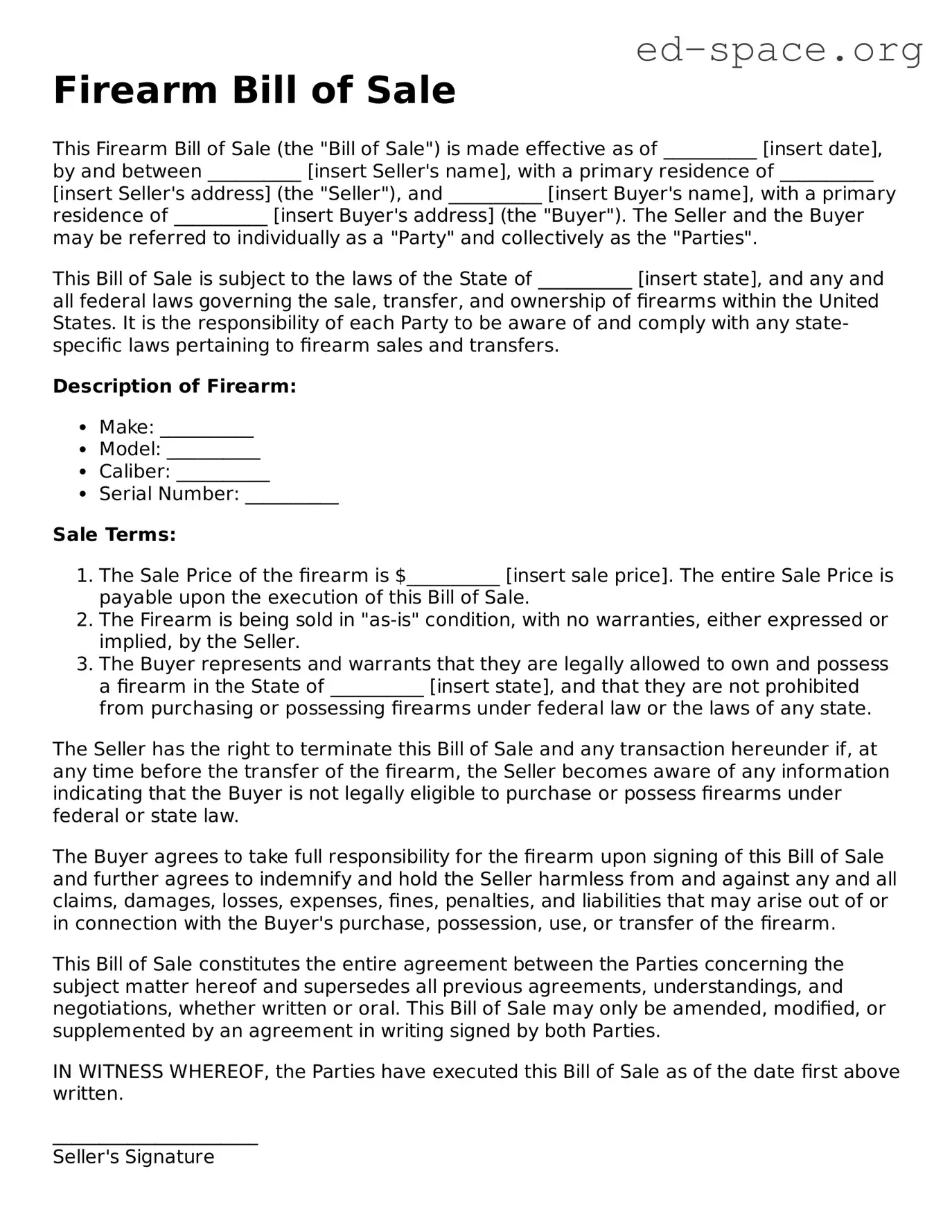What is a Firearm Bill of Sale?
A Firearm Bill of Sale is a legal document that records the sale and transfer of a firearm from a seller to a buyer. It provides proof of purchase and details the terms of the sale, including information about the buyer, seller, firearm, and sale date.
Why do I need a Firearm Bill of Sale?
Having a Firearm Bill of Sale is essential for several reasons. It serves as evidence of the transaction, can be used for personal record-keeping, and is often required for registration purposes. Additionally, it helps ensure that the transfer of ownership is conducted legally and transparently.
What information should be included in a Firearm Bill of Sale?
A comprehensive Firearm Bill of Sale should include the full names and addresses of both the buyer and seller, a detailed description of the firearm (make, model, caliber, serial number), the sale price, date of the sale, and signatures of both parties involved. It may also include terms of the sale and any warranties or representations.
Is a Firearm Bill of Sale legally required?
Whether a Firearm Bill of Sale is legally required varies by state. Some states mandate a bill of sale for the private transfer of firearms, while others do not. However, even when not legally required, it is highly recommended to have one for the reasons mentioned above.
Does a Firearm Bill of Sale need to be notarized?
In most cases, notarization is not required for a Firearm Bill of Sale to be legal and valid. However, some states may have specific requirements, and notarization can add an additional layer of legality and formality to the document. It's advisable to check local laws to determine if notarization is needed in your area.
Can I create my own Firearm Bill of Sale?
Yes, individuals can create their own Firearm Bill of Sale. There are templates and guides available online that can help ensure all necessary information is included. However, it's important to ensure that the bill of sale complies with local and state laws.
What happens if I lose my Firearm Bill of Sale?
If you lose your Firearm Bill of Sale, it's recommended to contact the other party involved in the transaction to see if they have a copy. If not, creating a new document detailing the transaction and having it signed by both parties, though not ideal, can serve as a substitute for the original.
Is a Firearm Bill of Sale the same as a warranty?
No, a Firearm Bill of Sale is not the same as a warranty. The bill of sale documents the transaction and transfer of ownership. A warranty, if given, would detail the seller's guarantee regarding the condition of the firearm and any coverage for defects or problems post-sale.
Can a Firearm Bill of Sale be used for all types of firearms?
Yes, a Firearm Bill of Sale can and should be used for the sale of any type of firearm. This includes handguns, rifles, shotguns, and other firearms, ensuring that the sale is documented and legal.
How does a Firearm Bill of Sale protect the buyer and seller?
For buyers, a Firearm Bill of Sale provides proof of ownership and legality of purchase. For sellers, it serves as a record that they have legally transferred the firearm and are no longer responsible for its use. Additionally, it protects both parties by detailing the terms of the sale, preventing future disputes.
